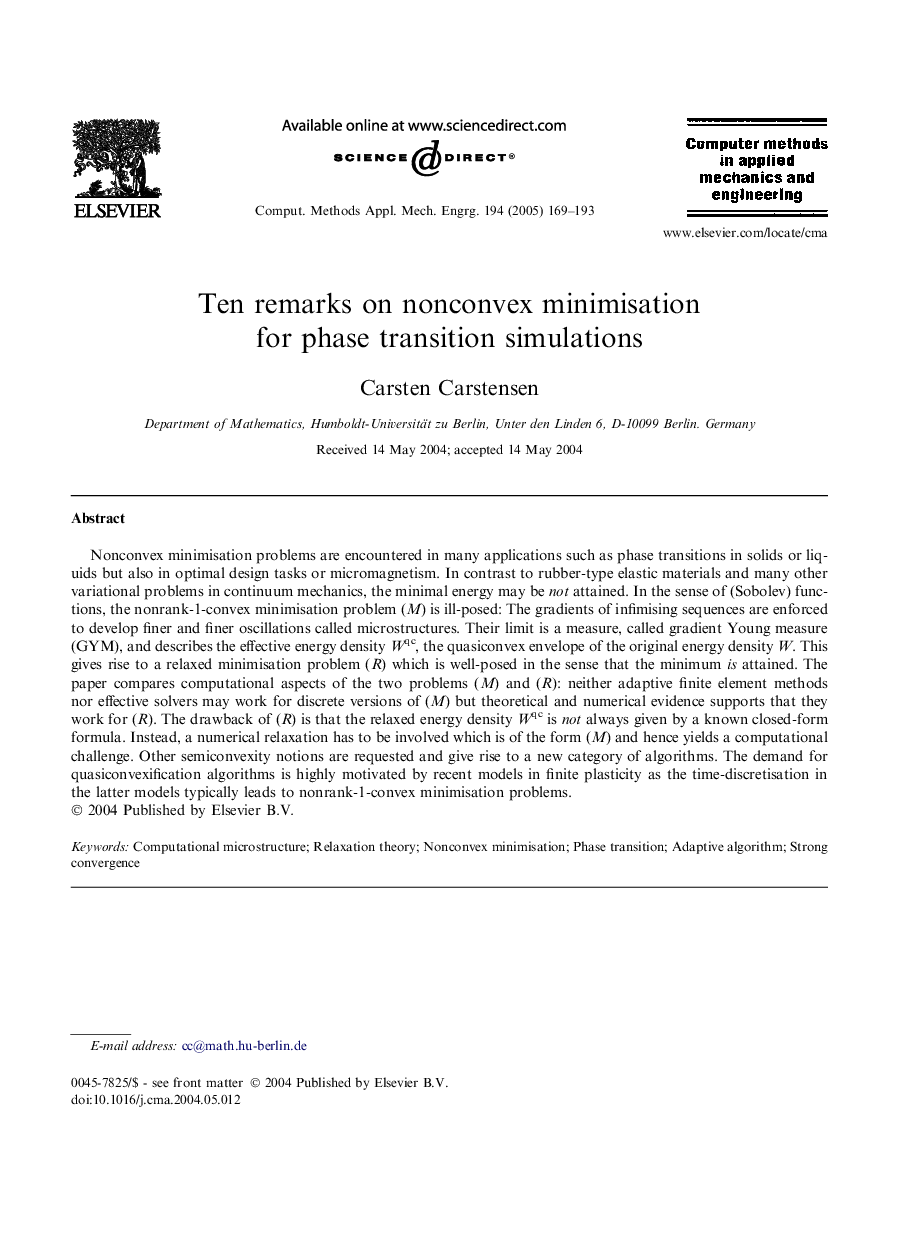| کد مقاله | کد نشریه | سال انتشار | مقاله انگلیسی | نسخه تمام متن |
|---|---|---|---|---|
| 9667151 | 863120 | 2005 | 25 صفحه PDF | دانلود رایگان |
عنوان انگلیسی مقاله ISI
Ten remarks on nonconvex minimisation for phase transition simulations
دانلود مقاله + سفارش ترجمه
دانلود مقاله ISI انگلیسی
رایگان برای ایرانیان
کلمات کلیدی
موضوعات مرتبط
مهندسی و علوم پایه
مهندسی کامپیوتر
نرم افزارهای علوم کامپیوتر
پیش نمایش صفحه اول مقاله

چکیده انگلیسی
Nonconvex minimisation problems are encountered in many applications such as phase transitions in solids or liquids but also in optimal design tasks or micromagnetism. In contrast to rubber-type elastic materials and many other variational problems in continuum mechanics, the minimal energy may be not attained. In the sense of (Sobolev) functions, the nonrank-1-convex minimisation problem (M) is ill-posed: The gradients of infimising sequences are enforced to develop finer and finer oscillations called microstructures. Their limit is a measure, called gradient Young measure (GYM), and describes the effective energy density Wqc, the quasiconvex envelope of the original energy density W. This gives rise to a relaxed minimisation problem (R) which is well-posed in the sense that the minimum is attained. The paper compares computational aspects of the two problems (M) and (R): neither adaptive finite element methods nor effective solvers may work for discrete versions of (M) but theoretical and numerical evidence supports that they work for (R). The drawback of (R) is that the relaxed energy density Wqc is not always given by a known closed-form formula. Instead, a numerical relaxation has to be involved which is of the form (M) and hence yields a computational challenge. Other semiconvexity notions are requested and give rise to a new category of algorithms. The demand for quasiconvexification algorithms is highly motivated by recent models in finite plasticity as the time-discretisation in the latter models typically leads to nonrank-1-convex minimisation problems.
ناشر
Database: Elsevier - ScienceDirect (ساینس دایرکت)
Journal: Computer Methods in Applied Mechanics and Engineering - Volume 194, Issues 2â5, 4 February 2005, Pages 169-193
Journal: Computer Methods in Applied Mechanics and Engineering - Volume 194, Issues 2â5, 4 February 2005, Pages 169-193
نویسندگان
Carsten Carstensen,